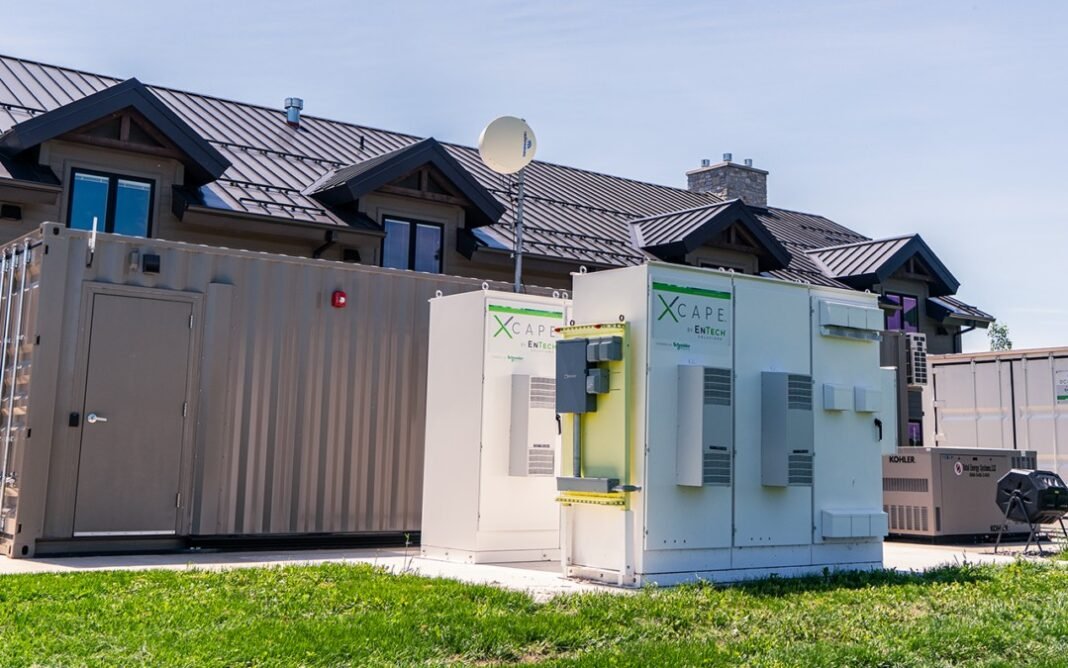In the current energy environment, Microgrids and Backup Power are vital for ensuring resilience, reliability, and sustainability.
As climate change and vulnerabilities in the power grid present ongoing challenges, both industries and communities are increasingly adopting these innovative solutions to guarantee a continuous power supply.
They not only offer stability during power outages but also promote energy independence and efficiency.
The Increasing Demand for Energy Resilience
Energy resilience has evolved from a minor consideration to a critical requirement.
The rise in extreme weather events has led to more frequent and prolonged power outages.
While traditional backup generators can be effective for short-term interruptions, they are inadequate for addressing the needs of extended outages.
The Transformation of Power Systems
Traditionally, centralized power grids have served as the foundation for electricity distribution.
However, these extensive grids are vulnerable to failures caused by natural disasters, cyber threats, and aging infrastructure.
In response, Microgrids and Backup Power systems have emerged as decentralized solutions that improve reliability and sustainability.
Defining Microgrids
A microgrid is an autonomous energy system that can function independently or in tandem with the main power grid.
By incorporating renewable energy sources, advanced control technologies, and energy storage solutions, microgrids guarantee a steady energy supply even during disruptions in the main grid.
Key Elements of a Microgrid
Distributed Generation: Renewable energy sources, such as solar panels and wind turbines, produce electricity locally, thereby decreasing reliance on conventional power plants.
Energy Storage Systems: Battery storage technologies, including lithium-ion and flow batteries, capture surplus energy for utilization during peak demand times.
Advanced Control Systems: Sophisticated software oversees power distribution, enhances energy flow, and facilitates smooth transitions between grid-connected and islanded operations.
Load Management: Intelligent automation modifies power distribution in response to real-time demand, promoting efficiency and cost reduction.
Advantages of Microgrids
Grid Autonomy: Microgrids can function independently, decreasing dependence on external power supplies.
Improved Reliability: By integrating various power generation sources, microgrids provide redundancy that reduces the likelihood of blackouts.
Cost-Effectiveness: Energy storage solutions and intelligent load management contribute to lower operational expenses by minimizing peak demand charges.
Environmental Sustainability: The incorporation of renewable energy sources reduces carbon emissions and aligns with environmental objectives.
The Importance of Backup Power in Contemporary Energy Systems
While microgrids establish a reliable energy framework, backup power systems serve as a crucial safety measure.
Industries, hospitals, data centers, and essential infrastructure depend on backup power to maintain uninterrupted operations during power outages.
Categories of Backup Power Solutions
Diesel Generators: Commonly utilized for emergency power, though they encounter issues such as fuel supply limitations and environmental concerns.
Battery Backup Systems: Lithium-ion and solid-state batteries deliver immediate power and integrate effectively with microgrids.
Fuel Cells: Hydrogen fuel cells present a clean and efficient alternative to conventional generators.
Hybrid Solutions: The combination of various backup sources, such as solar panels paired with battery storage, enhances resilience and sustainability.
Challenges in Implementing Backup Power
Despite their benefits, backup power solutions face several challenges:
Regulatory Challenges: Adhering to grid interconnection standards and emission regulations can be complicated.
Significant Initial Investment: Cutting-edge storage and generation technologies necessitate considerable upfront costs.
Maintenance Needs: Regular maintenance is essential to ensure reliability and extend the lifespan of the systems.
Backup Power and Microgrids: A Global Perspective
Across the globe, various sectors are utilizing Backup Power and Microgrids to strengthen energy security.
Case Study: Industrial Implementation
Major manufacturing entities, such as Siemens’ Smart Infrastructure division, have effectively adopted microgrids to enhance power efficiency and lower expenses.
Their Gridscale X platform allows factories to sustain operations during power outages while optimizing energy use.
Case Study: Healthcare Stability
Hospitals depend on a constant power supply for essential medical devices.
Organizations like Kaiser Permanente have incorporated microgrid and backup power systems to guarantee patient safety and ensure continuous operations.
Addressing Implementation Challenges
Despite the evident advantages, the widespread integration of Microgrids and Backup Power encounters several challenges.
Nevertheless, solutions are emerging to tackle these hurdles.

Regulatory Encouragement
Governments are increasingly acknowledging the necessity for resilient energy infrastructures.
Initiatives such as the EU’s Clean Energy Package promote microgrid adoption by providing incentives and establishing regulatory guidelines.
Financial Innovations
Emerging financing models, such as Energy-as-a-Service (EaaS), enable organizations to implement microgrids without substantial upfront investments.
By converting costs from capital expenditures to operational expenses, a greater number of businesses can invest in resilient energy solutions.
The Future of Microgrids and Backup Power
The ongoing transformation of energy systems will further propel the adoption of microgrids and sophisticated backup solutions.
As the global community shifts towards cleaner energy sources, hybrid systems that combine renewables with effective storage solutions are expected to become standard.
AI and IoT in Energy Management
AI-driven analytics will optimize energy consumption, predict maintenance needs, and enhance cybersecurity.
IoT devices will enable real-time monitoring, ensuring precise control over power distribution.
Emerging hydrogen storage solutions promise long-duration backup power, making microgrids even more reliable.
Projects like Spain’s H2Ports demonstrate the potential of hydrogen integration in energy resilience.
Expert Editorial Comment
As energy demands grow and grid vulnerabilities increase, Microgrids and Backup Power provide a practical and sustainable solution.
Their ability to ensure reliability, reduce costs, and support environmental goals makes them indispensable for industries, businesses, and communities.
By overcoming challenges through regulatory support, technological advancements, and innovative financial models, the future of energy resilience looks promising.

